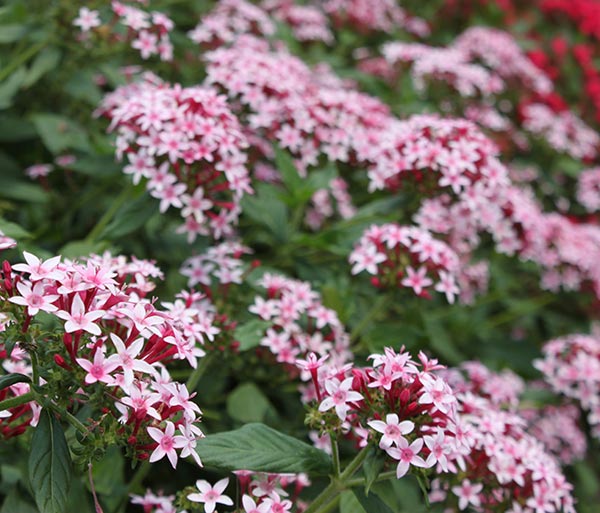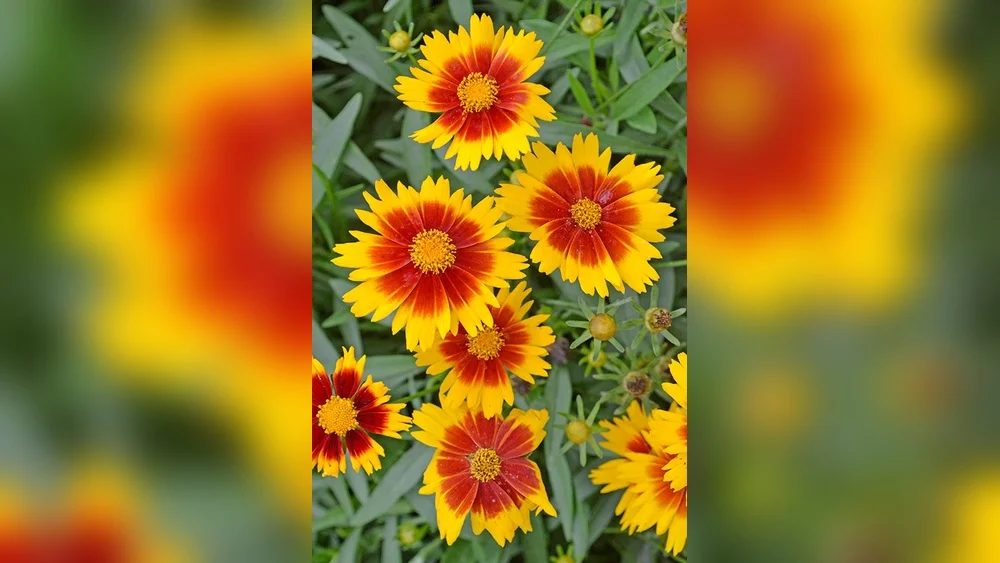Living in Florida means dealing with intense heat and humidity that can be tough on your garden. If you want your outdoor space to thrive despite the scorching sun, choosing the right plants is key.
You don’t have to settle for wilted leaves or constant watering. Imagine a garden bursting with vibrant colors and lush greenery that actually loves the heat. You’ll discover the best plants for Florida heat that are easy to care for and built to withstand the harsh summer sun.
Ready to transform your garden into a heat-resistant paradise? Keep reading to find out which plants will make your yard flourish all year long.
Heat-tolerant Flowering Plants
Heat-tolerant flowering plants brighten Florida gardens despite intense sun and heat. They thrive with minimal care and resist dry spells. Choosing these plants helps maintain vibrant colors all summer long.
These flowers handle strong sunlight and high temperatures. They attract pollinators like butterflies and hummingbirds. Their resilience makes them perfect for Florida’s warm climate.
Lantana
Lantana blooms with bright, multicolored flower clusters. It grows quickly and needs little water. This plant attracts butterflies and thrives in full sun.
Hibiscus
Hibiscus offers large, bold flowers in many colors. It handles Florida’s heat and humidity well. It adds tropical flair to gardens and blooms most of the year.
Pentas
Pentas produce star-shaped flowers in red, pink, and white. They bloom continuously under strong sunlight. These plants attract hummingbirds and butterflies.
Salvia
Salvia has tall spikes of flowers in blue, purple, or red. It tolerates drought and heat easily. Its long-lasting blooms attract pollinators all summer.
Sunflowers
Sunflowers grow tall with bright yellow petals. They love direct sunlight and warm weather. These cheerful flowers are easy to grow and maintain.
Coreopsis
Coreopsis features daisy-like yellow or orange flowers. It grows well in sun or partial shade. This plant is tough and blooms for many weeks.
Coneflowers
Coneflowers have pink, purple, or white petals around a cone center. They bloom all summer and attract butterflies. These plants need little water once established.
Zinnia
Zinnia is an easy annual with bright, colorful blooms. It thrives in hot, sunny spots. Zinnias bloom nonstop and add vibrant color to any garden.
Plumbago
Plumbago produces clusters of pale blue flowers. It grows well in hot, sunny areas. This shrub is low-maintenance and blooms for months.
Firespike
Firespike has bright red tubular flowers on tall stems. It loves heat and attracts hummingbirds. This plant adds vertical interest to sunny gardens.
Firebush
Firebush displays fiery red-orange flowers year-round. It tolerates heat and drought well. This shrub draws butterflies and hummingbirds to the garden.
Colorful Foliage Plants
Colorful foliage plants bring life and vibrancy to Florida gardens. They handle intense sun and heat well. These plants thrive in warm climates and need little water once established. Their leaves show bright reds, yellows, and greens. They create interest even without flowers. Perfect for adding tropical style and texture.
Crotons
Crotons have bold, colorful leaves that shine under the sun. Their foliage displays red, orange, yellow, and green shades. They grow well in full sun or partial shade. Crotons tolerate Florida heat and humidity easily. These plants add a splash of color year-round. They prefer well-drained soil and regular watering. Crotons are low-maintenance and bring a tropical look to any garden.
Bromeliads
Bromeliads thrive in Florida’s hot climate and strong sunlight. Their leaves form unique shapes and bright patterns. Colors include pink, red, yellow, and green. Many bromeliads store water in their leaf cups. This helps them survive dry spells. They grow well in pots or garden beds. Bromeliads attract hummingbirds and add exotic beauty. These plants require little care and stay vibrant in heat.
Succulents And Drought-tolerant Options
Succulents and drought-tolerant plants thrive in Florida’s hot climate. They require little water and can handle the intense sun. These plants save water and reduce garden maintenance. Their unique shapes and colors add beauty and texture.
Succulents
Succulents store water in their leaves, making them drought-resistant. They come in many shapes, sizes, and colors. Aloe vera and agave are popular choices. These plants survive well in sandy Florida soil. Succulents need bright sunlight and minimal watering.
Ornamental Grasses
Ornamental grasses add movement and softness to gardens. Muhly grass and fountain grass are heat-tolerant options. These grasses grow well with little water once established. They also help prevent soil erosion. Their feathery plumes attract birds and butterflies.
Palms
Palms bring a tropical look to Florida landscapes. Sabal palm and pygmy palm are very heat and drought-tolerant. Palms thrive in full sun and sandy soil. They need occasional watering but can survive dry spells. Their tall, slender trunks add vertical interest.
Bottlebrush
Bottlebrush is a shrub with bright red flowers. It tolerates heat, drought, and poor soil. This plant attracts hummingbirds and bees with its nectar-rich blooms. Bottlebrush is easy to prune and maintain. It adds vibrant color to Florida gardens.
Coontie
Coontie is a native Florida plant that resists heat and drought. It has dark green, fern-like leaves and grows low to the ground. Coontie thrives in sandy or rocky soil. It provides habitat for butterflies and other wildlife. This plant works well as ground cover or border.
:max_bytes(150000):strip_icc()/GettyImages-1347755293-4667828ca8634f8aa763258805a0be16.jpg)
Credit: www.treehugger.com
Plant Care Tips For Florida Heat
Plants that thrive in Florida heat need special care to stay healthy and vibrant. The intense sun and high temperatures can stress plants without proper attention. Using smart plant care techniques helps them grow strong despite the heat. Below are essential tips to keep your garden lush and thriving in the Florida climate.
Watering Strategies
Water plants early in the morning or late in the evening. This reduces water loss from evaporation. Deep watering encourages roots to grow deeper and stronger. Avoid frequent shallow watering, which weakens root systems. Use drip irrigation or soaker hoses to deliver water directly to roots. Check soil moisture regularly to prevent overwatering or underwatering.
Soil Preparation
Well-prepared soil improves plant health and heat tolerance. Mix organic matter like compost into the soil before planting. This increases water retention and nutrient supply. Ensure the soil drains well to avoid root rot. Test soil pH and adjust it for the specific plants you grow. Good soil boosts plant growth and helps withstand Florida’s heat.
Sunlight Requirements
Most heat-tolerant plants need full sun for at least six hours daily. Some plants prefer partial shade during the hottest hours. Observe your garden’s sun pattern to place plants correctly. Use shade cloth or garden structures to protect sensitive plants. Proper sunlight exposure enhances flowering and overall plant vigor.
Mulching Benefits
Mulch keeps the soil cool and moist by reducing evaporation. It also prevents weed growth that competes for water and nutrients. Apply a 2-3 inch layer of organic mulch like bark or pine straw around plants. Mulching improves soil health by slowly adding nutrients as it decomposes. It helps maintain steady soil temperature during hot days.
Design Ideas For Heat-resistant Gardens
Designing a garden that withstands Florida’s intense heat requires thoughtful planning. Choosing the right plants is only part of the solution. Effective garden design enhances plant health and garden beauty. This section explores ideas to create heat-resistant gardens that thrive under the sun.
Combining Colors And Textures
Mixing plants with different colors and leaf textures adds visual interest. Bright flowers like lantana and hibiscus brighten hot spots. Use plants with varied leaf shapes, such as spiky salvias and soft bromeliads. This contrast keeps gardens lively and appealing even in harsh sunlight.
Using Native Plants
Native plants adapt well to Florida’s heat and soil. They need less water and care, making gardening easier. Examples include firebush and coreopsis. These plants support local wildlife and create a natural look. Using natives helps gardens survive dry spells and heat waves.
Creating Shade Zones
Shade protects delicate plants from direct sun damage. Use trees or tall shrubs to form natural shade areas. Palms and crotons provide height and shield smaller plants. Shade zones reduce water loss and keep soil cool. This design helps plants grow stronger during hot days.
Container Gardening
Containers let you move plants to avoid extreme heat. Use pots with good drainage to prevent root rot. Group heat-loving plants like succulents and zinnias in containers. Containers add flexibility and allow easy care. They also brighten patios and small spaces.

Credit: costafarms.com

Credit: www.jacksonville.com
Frequently Asked Questions
What Plants Can Survive In The Heat In Florida?
Heat-tolerant plants in Florida include lantana, hibiscus, pentas, salvia, sunflowers, crotons, bromeliads, coreopsis, coneflowers, and succulents. These plants thrive in high temperatures, humidity, and require low maintenance, making them ideal for Florida’s hot climate.
What Plants Can Take Full Sun In Florida?
Lantana, hibiscus, pentas, salvia, sunflowers, crotons, bromeliads, coreopsis, coneflowers, succulents, palms, and firebush thrive in Florida’s full sun and heat. These plants tolerate high temperatures and humidity well, making them ideal for sunny Florida gardens.
What Plants Thrive In Extreme Heat?
Plants like lantana, hibiscus, pentas, salvia, sunflowers, crotons, bromeliads, succulents, and firebush thrive in extreme heat. They tolerate high temperatures and require low maintenance, making them ideal for hot climates like Florida and Texas.
What Plants Tolerate Full Sun And Heat?
Lantana, hibiscus, pentas, salvia, sunflowers, crotons, bromeliads, coreopsis, coneflowers, and succulents tolerate full sun and heat well. These plants thrive in hot, sunny conditions and require low maintenance.
Conclusion
Choosing the right plants makes Florida’s heat easier to handle. Plants like lantana, hibiscus, and sunflowers add color and survive well. Succulents and crotons bring texture and need less water. These hardy plants grow strong in hot, sunny spots. Your garden will stay bright and lively all summer long.
Simple care and smart choices help plants thrive here. Enjoy a beautiful garden that loves the Florida sun.

